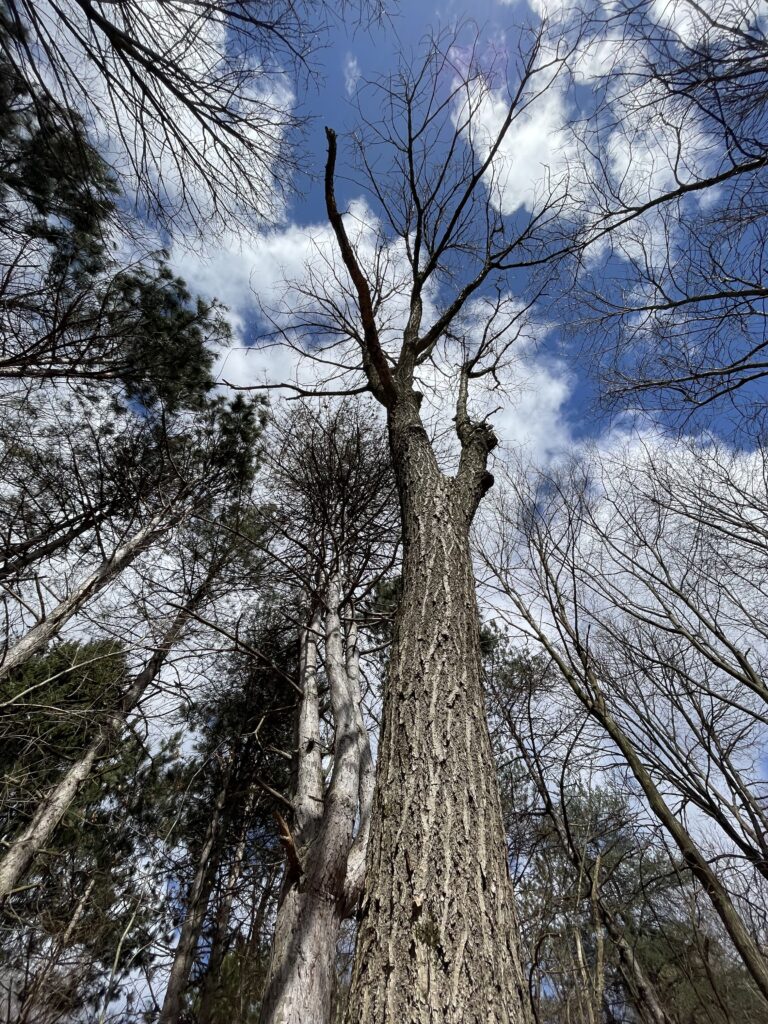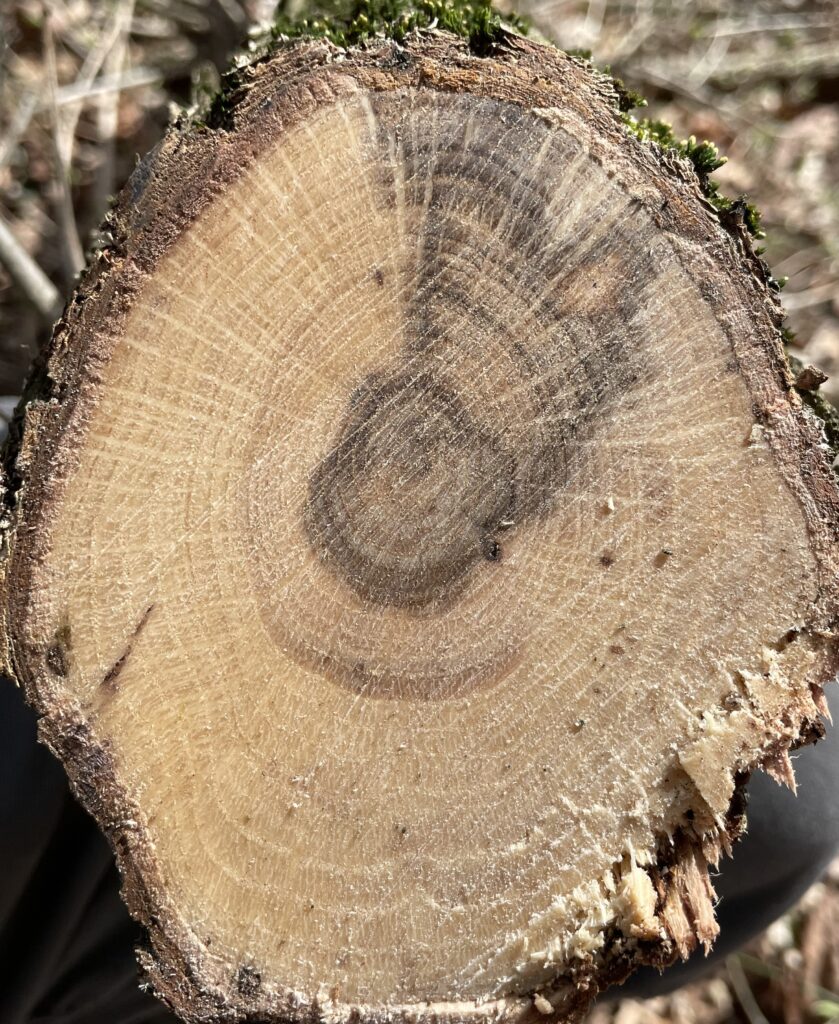Experience-Seeds-Knowledge-Plant Discoveries-Ecological Enrichment-Join Now Click Here!


The Mongolian Oak Rises Into the Canopy

I’m not sure where I received the acorns of this species. In the beginning, I was part of a network of what I loosely defined as oak obsessed individuals with a love for all things Quercus. Yes. Whacky edible acorn people were part of this group. Everyone contributed. I do remember getting two attempts of it while trying to establish it at my farm. It was one of the few oaks where everyone kept asking me over and over if I grew it and if it was in my plantings. I was told by several super nice plant people via phone at that time, that if its from a non-hybrid selection, the acorns are delicious and very low tannin. The theory was that there were some compounds found within the acorns that make them actually sweet tasting with no leaching required. It does appear in the scientific literature that two unique types of complex tannins named Mongolicin have been identified within it. Of course, no one knows how that translates to flavor or sweetness.
“Ken, you need to have this.” “Do you have the Mongolian oak?” “It is super rare, Ken.” “Mongolia, Ken.” “You need to get on that.” It became annoying to some degree. At the same time I began to think about growing this oak and was wondering about the quality and flavor of the acorns too. The sales calls from HQ on the Mongolian oak were working their magic. I had this thought about traveling to Mongolia and finding this legendary oak tree. In the writings of Krussman, Manual of Cultivated Broad-Leaved Trees and Shrubs, mentions it is an extremely drought tolerant oak as well as able to flourish into the land of short cold summers into zone 3. Despite the name, it is not common in Mongolia but is found in eastern Siberia, Korea and northern Japan. The acorns ripen in early August and drop free of the cap. The tree height is up to 90 feet or more. It sounded perfect to me. I wanted to at least get it started and try this super hardy white oak. The farther you travel north the number of species of oaks drops significantly. Here was an oak tree that had potential for its edible acorns as well as its lumber in very short season areas.

The acorns I was receiving were too dry at first. Finally someone sent a couple in an aluminum foil wrap where they had sprouted quickly. I was able to establish two trees of it. These two trees were planted sometime in the late 80’s. I planted them on a sandy hillside where there was little top soil. The Austrian pines my neighbor planted grew luxuriantly in this location. I put them in two foot tree shelters. I covered the 20 by 60 foot area with leaves gathered from the leaf pick up in my neighborhood where I was living at the time. I would drive down the road and pitch bags of leaves in my truck. It was quite a work out, but damn it Jim, I needed organic matter. Here was quite a line up of free organic matter and easily laid out to scoop up on my way to the farm. The bags were surprisingly clean and free of trash. One day with a giant load in my rusty yellow F-150 pick up truck while going around a corner, I lost my wheelbarrow. It too was rusty and yellow. I encourage everyone to buy a wheelbarrow that matches their pick up. I digress. I always put the wheelbarrow on the very top of the pile in the middle of the bed. The plastic is slippery and the wheelbarrow was upside down. The bad news was I didn’t notice when it happened. I never did figure out what corner it was or where my wheelbarrow disappeared to. All I know is when I got to the farm, it was gone. Oops. Hope I didn’t cause a car-wheelbarrow accident somewhere. I did retrace my steps later only to find out someone must of gotten a free wheelbarrow. Back to the leaves. The leaves worked very well. Spreading the leaves in this area definitely helped the plants in this particular hedgerow so it was worth the loss of the barrow. I had wafer ash, cornelian cherry, Amelanchier hybrids, American plum crosses, American hazelnuts and Krieder bur oaks all interwoven in that area. The leaves were spread all long this edge and in front of these plants on the edge of my property. I was surprised at how fast leaves break down so eventually I topped everything with sawdust two years later. Today the Mongolian oaks have risen to the canopy and are now part of this wonderful hedgerow. The shade cast by the bur oaks, pears, hybrid oaks and a little from the small canopy of the Mongolian oaks has eliminated the wafer ash and American plums. The cornelian cherry and Amelanchier look fantastic. I am adding more cornelian cherry as an understory for the Mongolian oaks as well as direct seeding pawpaw in this area now. All these plants will be fruitful in the shade provided by all these different species here. It was enjoyable to create this area which produced a lot of fruits and nuts in its day when sun was more plentiful. Many seeds were used for the production of plants for the nursery. I noticed other plants seeding in here too as it was the edge where birds rested in the trees above. Soon there was several nice patches of wild black raspberries and blackberries too. The oak trees from Mongolia help create this hillside with an array of wonderful edible plants.

My two Mongolian oaks still have not fruited and now going on forty years, I am wondering how I can change that. They look healthy and strong. Today I will drop some pelletized chicken manure and composted wood chips around them hoping to kick start their potentially delicious acorns. I will wait for these life giving acorns I have heard so much about and dream of the day of when I can share this treasure to others who dream of all things Mongolia as well as the ever growing palette of edible acorn species. Who knows maybe I will join the sales team at headquarters and start Quercus robo-dialing. Do you have the Mongolian oak? You need the Mongolian oak. Its from Mongolia. Once you have the Mongolian oak, you will become one with the Quercus.
